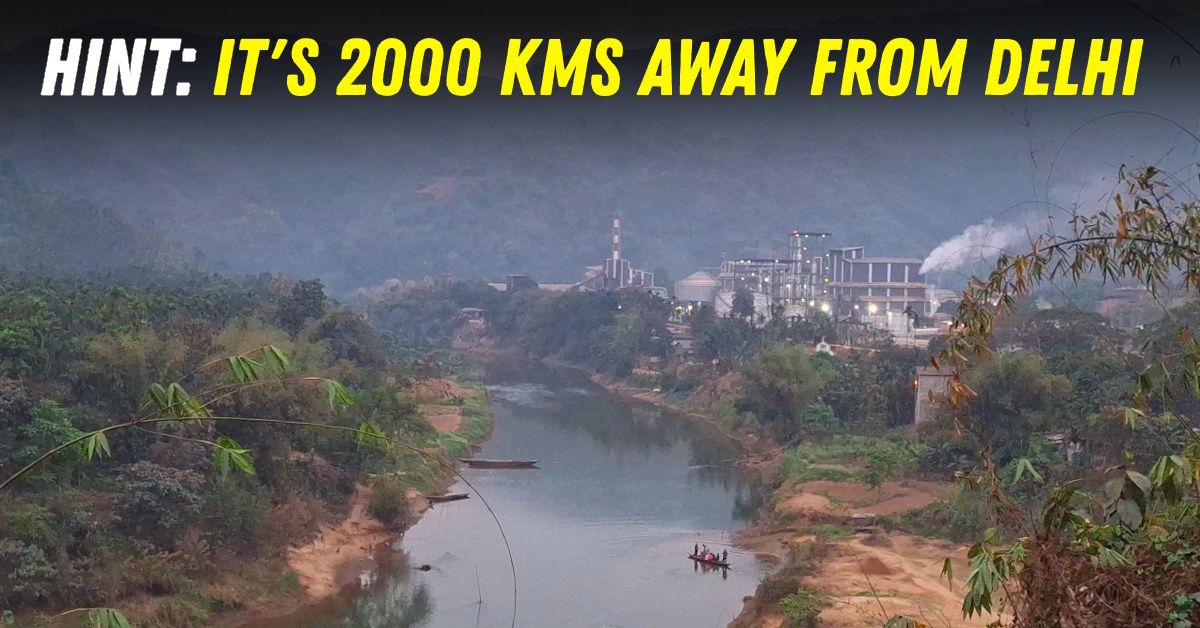India's Most Polluted City Revealed: No, It's Not Delhi


When most people think of air pollution in India, Delhi instantly comes to mind. For years, the capital city has been in the global spotlight for its hazardous winter smog, choking traffic, and poor air quality. But a recent study has revealed a new contender for the top spot - and it is not Delhi. The Assamese city of Byrnihat situated on the border of Assam and Meghalaya has now been identified as the most polluted urban area in the country, surpassing Delhi on key pollution parameters.
This revelation comes from a report by the Centre for Research on Energy and Clean Air (CREA). It highlights a significant and concerning trend: while Delhi remains in the second spot, other lesser-known cities are quietly becoming even more toxic to breathe in. Byrnihat's rapid industrialisation and limited pollution control infrastructure have pushed it to the top of the pollution charts, drawing attention to a wider and more complex national problem.
What makes this shift so important is the narrative it challenges. Until now, public pressure, media focus, and policy responses have been almost entirely centred on Delhi and its surrounding areas.
From vehicle restrictions and construction bans to the introduction of electric buses, the capital has been the testing ground for every major pollution control effort. Yet, despite these interventions, Delhi has not managed to shake off its chronic air quality issues.
The rise of Byrnihat as the most polluted city points to serious gaps in India’s pollution mitigation strategy. The city is home to multiple thermal power plants, and industrial activity there has intensified in recent years. Combined with growing vehicular numbers and a lack of public awareness about emissions, these factors have created a perfect storm of unchecked pollution. Unlike Delhi, Byrnihat lacks robust monitoring systems and a policy framework to tackle the problem head-on.
Pollution in smaller cities often goes unnoticed due to limited data collection and fewer media reports. This absence of visibility means that corrective action is either delayed or never initiated. It also means that the health impacts on local populations may be far worse than assumed. Respiratory illnesses, reduced life expectancy, and long-term exposure to particulate matter are growing threats that remain largely unaddressed.
The issue is not just about one city overtaking another. It is about recognising that air pollution is no longer a megacity-only problem. Vehicle emissions continue to be a major contributor, not just in Delhi but across towns that are seeing rapid urbanisation. Despite the rollout of cleaner Bharat Stage VI fuels and vehicle technologies, the sheer number of internal combustion vehicles on the road is cancelling out any environmental gains.
Moreover, the push for electric mobility and cleaner public transport has yet to penetrate smaller cities in a meaningful way. Initiatives like EV subsidies and electric bus fleets have largely stayed within metro limits. If India wants to make a real dent in its pollution levels, these benefits need to be extended to tier-2 and tier-3 cities like Byrnihat.
The data from CREA should be a wake-up call. Focusing all attention and resources on Delhi may help improve the capital’s numbers marginally, but it does little to solve the problem nationwide. Pollution does not recognise city boundaries.
Air travels, and so does the damage it causes. A more holistic and decentralised approach is needed - one that includes investment in regional air monitoring, local transport upgrades, and strict industrial emissions checks.
Until that happens, cities like Byrnihat will continue to suffer in silence, even as the spotlight remains fixed elsewhere. It is time to shift that spotlight and bring the real extent of the crisis into full view.